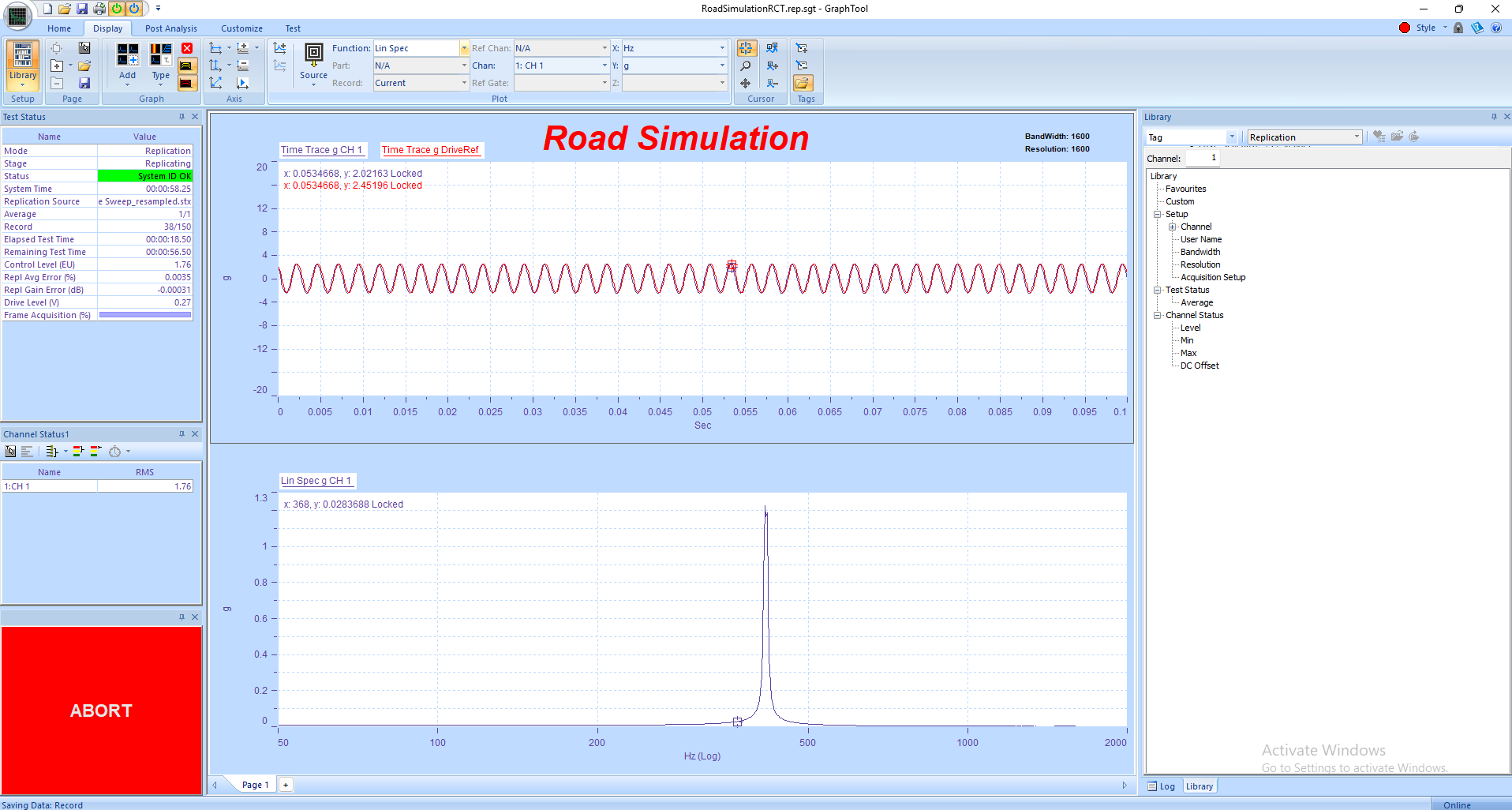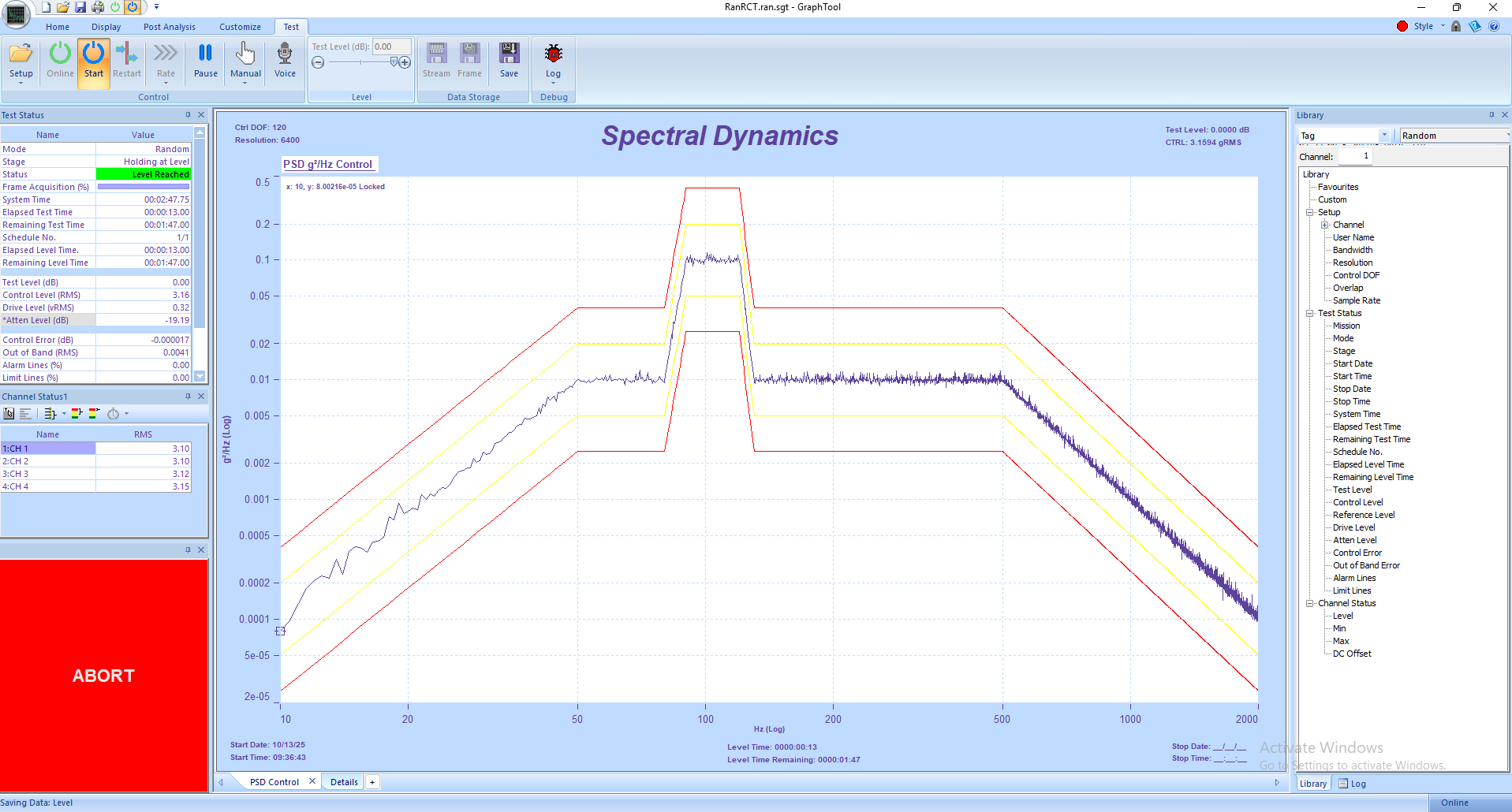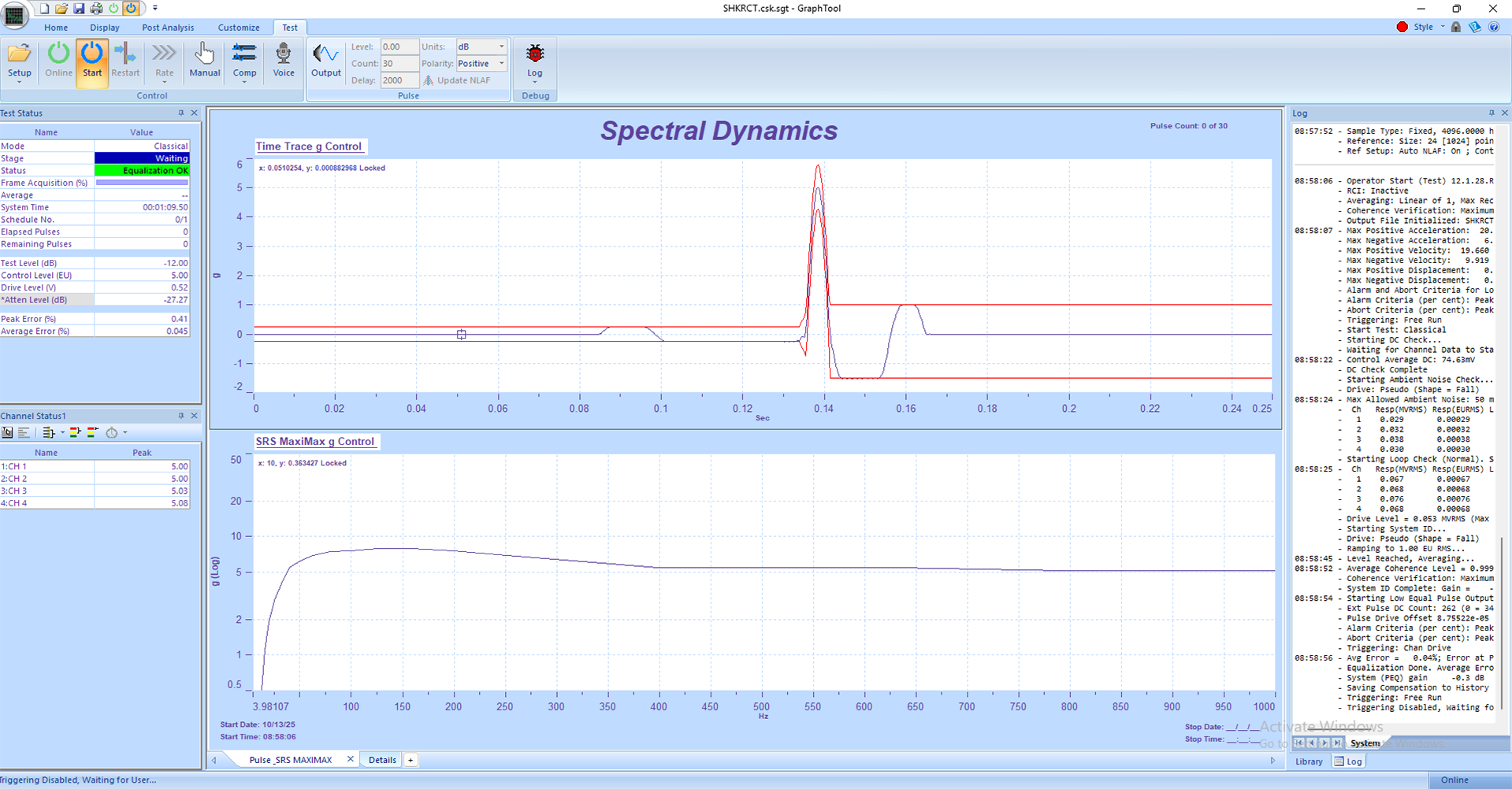Shock Response Spectrum (SRS) Vibration Tutorial
How to Run a Basic Shock Response Spectrum (SRS) Vibration Test on the Panther Control System
1. Safety First
• SRS testing involves high-energy transient events—ensure all personnel are clear of the test area before applying drive signals.
• Inspect all fixturing, accelerometers, and cables. Ensure that all components are secure and rated for the peak acceleration levels expected during the test.
• Verify that the shaker and amplifier are rated for the desired pulse duration, peak amplitude, and frequency range.
• Confirm accelerometer polarity, grounding, and TEDS identification to ensure accurate readings and prevent setup errors.
• Keep Abort, Stop, and Emergency Power Off (EPO) buttons accessible and tested before each run.
• Panther’s advanced safety system monitors over a dozen critical parameters 25 times per second. The system automatically aborts if limits are exceeded, ensuring protection of the DUT, shaker, and personnel.
2. System Setup
1. Power on the Panther control hardware and amplifier, keeping the amplifier in standby until system checks are complete.
2. Launch the Panther SRS control application on the host PC.
3. If not already connected to the hardware, navigate via the Setup→ Set Input Type menu in the Panther software to establish hardware connection.
4. Verify that all input channels are active, calibrated, and functioning correctly. Panther’s internal digital calibration is NIST-referenced for absolute precision.
5. Assign the appropriate output channel to the shaker amplifier input and confirm correct polarity.
6. Use the Library to open a previous SRS setup or create a new one. Panther’s Library allows alias-based organization for fast recall and simplified test setup.
3. Defining the SRS Test
1. In the Control tab, select the Shock Response Spectrum (SRS) test type.
2. Choose the desired waveform type (Half-Sine, Trapezoidal, or User-Defined).
3. Set the target SRS spectrum by defining the desired frequency range, damping ratio (typically 5%), and peak acceleration levels.
4. Assign the control and monitor accelerometer channels. Verify correct sensitivities and engineering units for each channel.
5. Configure abort and warning limits for acceleration, velocity, and displacement. Panther’s real-time safety checks automatically verify these parameters before playback.
6. Enable Adaptive Control for precise matching of the achieved SRS to the target. Panther automatically adjusts the drive signal to minimize iteration and achieve optimal accuracy.
7. If desired, activate Multiple Acquisition Streams to record selected channels at different sample rates for detailed time-history capture.
8. Save the configuration once setup parameters are verified.
4. Running the Test
1. Set the amplifier to ‘Operate’ mode once all pre-test checks are complete.
2. Press Start in the GTX toolbar to begin. Panther performs a full pre-test verification sequence before applying the drive signal.
3. The system generates the programmed pulse waveform and controls the achieved response to match the target SRS.
4. Monitor the drive and response signals in GTX using the real-time time-domain and SRS plots.
5. Panther’s adaptive time-domain control continuously adjusts to ensure the target SRS is achieved accurately and safely.
6. If any parameter exceeds a configured limit, Panther immediately aborts the test to prevent damage. The operator can also manually stop the test using the Abort button.
5. Data Review and Reporting
• Upon test completion, all drive, control, and response data are automatically saved in the Library for quick retrieval.
• Use GraphtoolX (GTX) to analyze results. Compare achieved vs. target SRS curves and review time-domain response waveforms.
• Overlay multiple runs to evaluate repeatability or the effect of parameter adjustments.
• Export results directly to Word, Excel, or PDF from GTX using the Share function for efficient documentation.
6. Panther Advantages in Shock Response Spectrum Testing
• Safety-First Design: Monitors 12+ safety parameters 25 times per second, ensuring complete system protection.
• Adaptive Time-Domain Control: Automatically adjusts the drive waveform to achieve the target SRS quickly and accurately.
• High Sampling Rate: 262 kHz simultaneous sampling across all channels captures high-frequency transient details.
• Precision Hardware: 24-bit ADCs with >110 dB dynamic range and <1° phase match up to 100 kHz deliver unmatched signal fidelity.
• Ease of Use: GTX’s intuitive, touch-friendly interface simplifies test setup, execution, and analysis.
• Real-Time Streaming: Gap-free data recording ensures no loss of transient information during testing.
• Library Integration: Easy recall of previous SRS setups and results speeds up repeat tests and reporting.
7. Best Practices
• Run a low-level verification test to confirm correct setup and signal integrity before full-level testing.
• Ensure accelerometers are tightly mounted and properly oriented to capture accurate transient responses.
• Use Panther’s pre-test safety verification and abort limit configuration to prevent overdrive or unsafe conditions.
• After each run, review the achieved vs. target SRS curve in GTX to confirm test validity.
• Back up calibration constants, setup files, and Library data regularly to ensure data integrity and repeatability.











